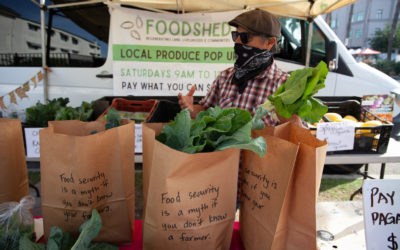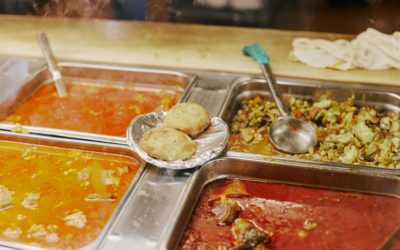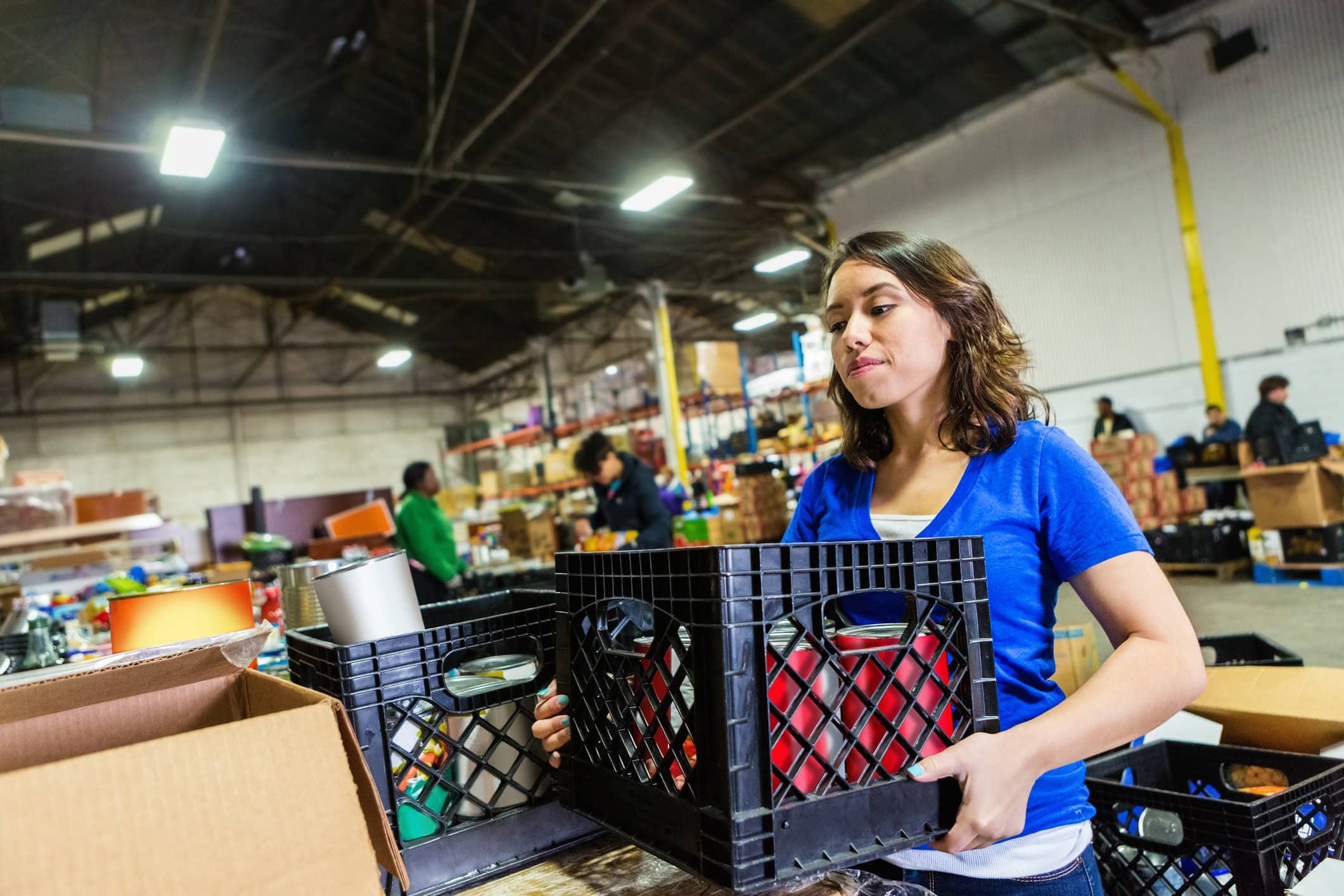Becoming a subscriber to Foodshed’s Fresh 5 program—a weekly distribution of fresh, seasonal produce, grown by the small farmers who make up the Foodshed cooperative—means you’re in for two surprises with every delivery. One is the produce itself: an ever-changing...
Objective 5
Expand Integrated Nutrition and Food Security
Introduction
Food insecurity is a public health crisis that affects millions of people in the United States on a daily basis, and costs billions of dollars in education and healthcare annually. It is a deep and persistent issue that the COVID-19 pandemic has amplified. In 2019, nearly 10.5% of all U.S. households experienced food insecurity. By September of 2020, that number more than doubled to 25% who were unable to acquire enough food to meet their needs or were uncertain of where their next meal might come from.
Food insecurity is defined by the USDA as the lack of consistent access to enough food for a healthy and active life. It is a socio-economic condition that is measured at the household level. Hunger, which is measured at the individual level, is a distinct concept. It refers to the uneasy or painful sensation caused by a lack of food.
According to the Food and Agriculture Organization, food security exists when all people at all times have physical and economic access to sufficient, safe, and nutritious foods. While nutrition is deeply linked to food security, efforts to address food security do not always focus on the nutritional value of food. Achieving nutrition security requires access to adequate and appropriate healthcare services, along with a diet that meets the nutritional needs for a healthy and active life.
The causes of food and nutrition insecurity are interconnected and are rooted in poverty. Low wages, unemployment, education, racism, inequality, zip code, disability, citizenship status, and family size all contribute to a household’s food and nutrition security status. Food and nutrition insecurity are also linked to diet-related diseases and physical, mental, and emotional challenges, including higher rates of diabetes, obesity, and hypertension, anxiety, depression, behavioral issues, developmental delays, lower rates of academic achievement, and reduced worker productivity. Black, Indigenous, and people of color (BIPOC) are disproportionately impacted, and as a result, the impacts of long-lasting trauma are ever present across food and nutrition insecure communities.
Ultimately, the structure of our industrial food system perpetuates the food and nutrition insecurity that we see today. Decades of unfettered capitalism and government subsidies have supported the overproduction and marketing of cheap and unhealthy food that has infiltrated communities and federal food assistance programs. As long as food is produced for profit rather than need, people will experience food and nutrition insecurity.
In looking to “reset the table,” the Rockefeller Foundation and others have called for a shift toward an integrated nutrition security system. An integrated nutrition security system combines nutrition and food security, ensuring that all people have dignified access to affordable, healthy, and culturally appropriate food. It treats access to healthy food as a right, making it a core element of health and education.
Immediate actions recommended by the Rockefeller Foundation for moving toward an integrated nutrition security system include strengthening food and nutrition assistance programs, investing in schools as anchors of community feeding, and expanding food as medicine. These actions and more will be essential to expanding nutrition and food security in San Diego County. Increasing long-term economic security for all and dismantling racism are equally vital.
Expand Integrated Nutrition and Food Security
Objective 5
Chapter Summary
Food and nutrition insecurity rates are high in San Diego County.
According to the San Diego Hunger Coalition, approximately 1 in 3 San Diegans experience nutrition insecurity.
Black, Indigenous, and people of color are disproportionately impacted by food insecurity.
For the past 20 years, Black and Hispanic/Latinx households across the country have had rates of food insecurity that are nearly double those of white households. From 2000 to 2010, 25% of Indigenous people were consistently food insecure.
Food and nutrition insecurity are rooted in poverty and inequality.
San Diego County has the third highest number of people living in poverty of any county in California, with Black, Indigenous, and people of color most disproportionately impacted.
The COVID-19 pandemic has dramatically increased the need for food assistance.
Prior to the COVID-19 pandemic, about 2 million households in California participated in CalFresh. During 2020 that number increased to over 2.4 million households. Total federal and state CalFresh benefits in California increased by 61 percent. Nationally, food banks distributed 50% more food in 2020 than they did in 2019.
The majority of food assistance comes from federal programs.
Measured in meals, 91% of food assistance in San Diego County is provided by federal programs, mostly CalFresh, meal programs for children, and WIC. The remaining 9% comes from the local charitable food system, including food banks, pantries, and gleaning efforts.
Federal nutrition assistance programs are significantly underused in San Diego County.
According to the San Diego Hunger Coalition, there is a current meal gap of 12.3 million meals per month, and a 62% CalFresh utilization rate for those at 130% of the federal poverty level and 52% for those at 150% of the federal poverty level.
Improving the nutritional quality of food assistance is a priority.
An analysis of the National School Lunch Program found that lunches exceeded targets for dairy, fruit, refined grains, red meats, and starchy vegetables but had insufficient amounts of whole grains, legumes, vegetables, and nuts.






